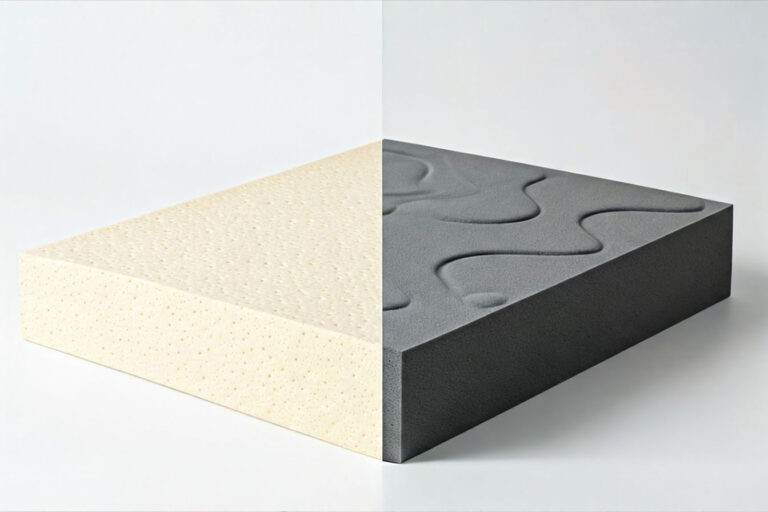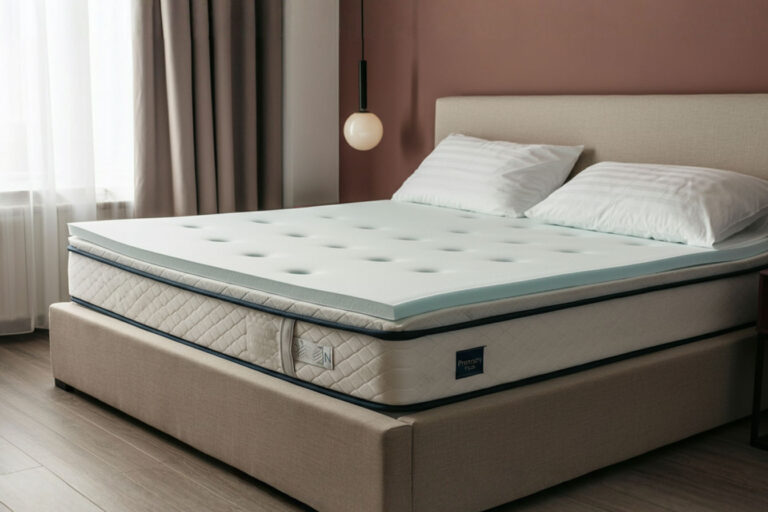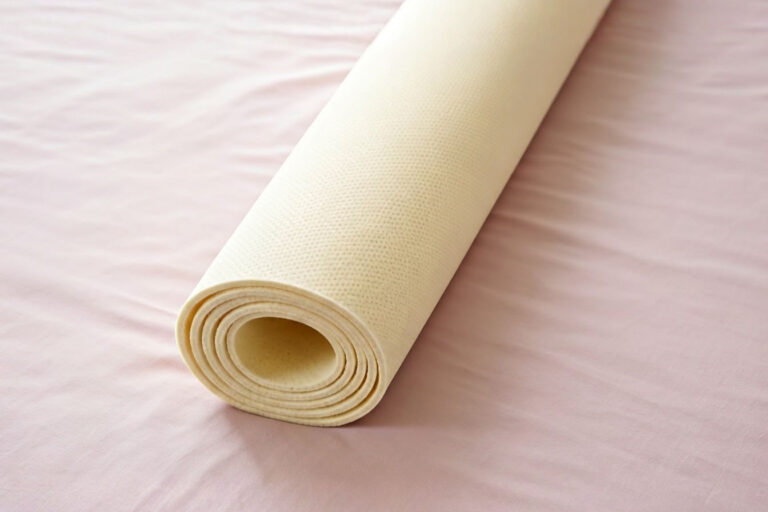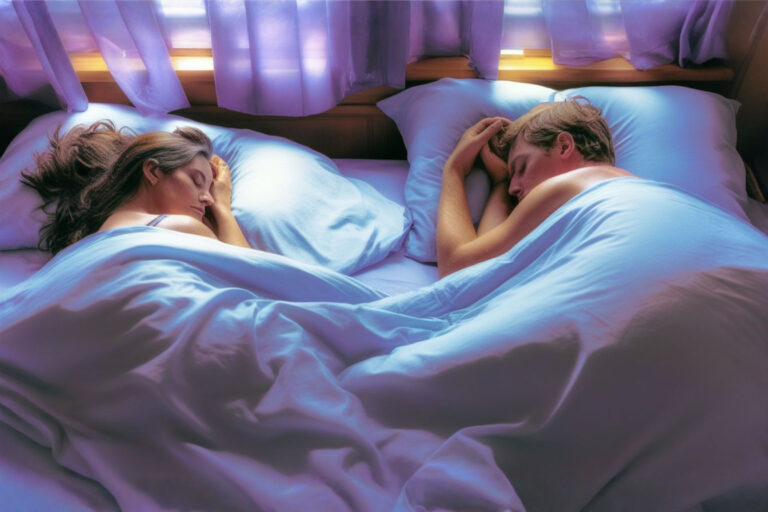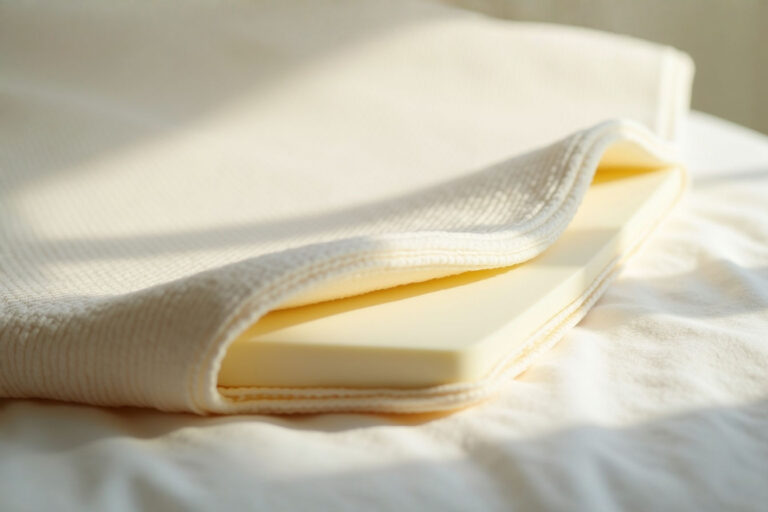Mattress Cover for Moving: The 3-Layer Protection System Professional Movers Actually Use
Learn why standard mattress covers fail and how to implement the same 3-layer protection system professional movers use to ensure your valuable mattress arrives at your new home damage-free.
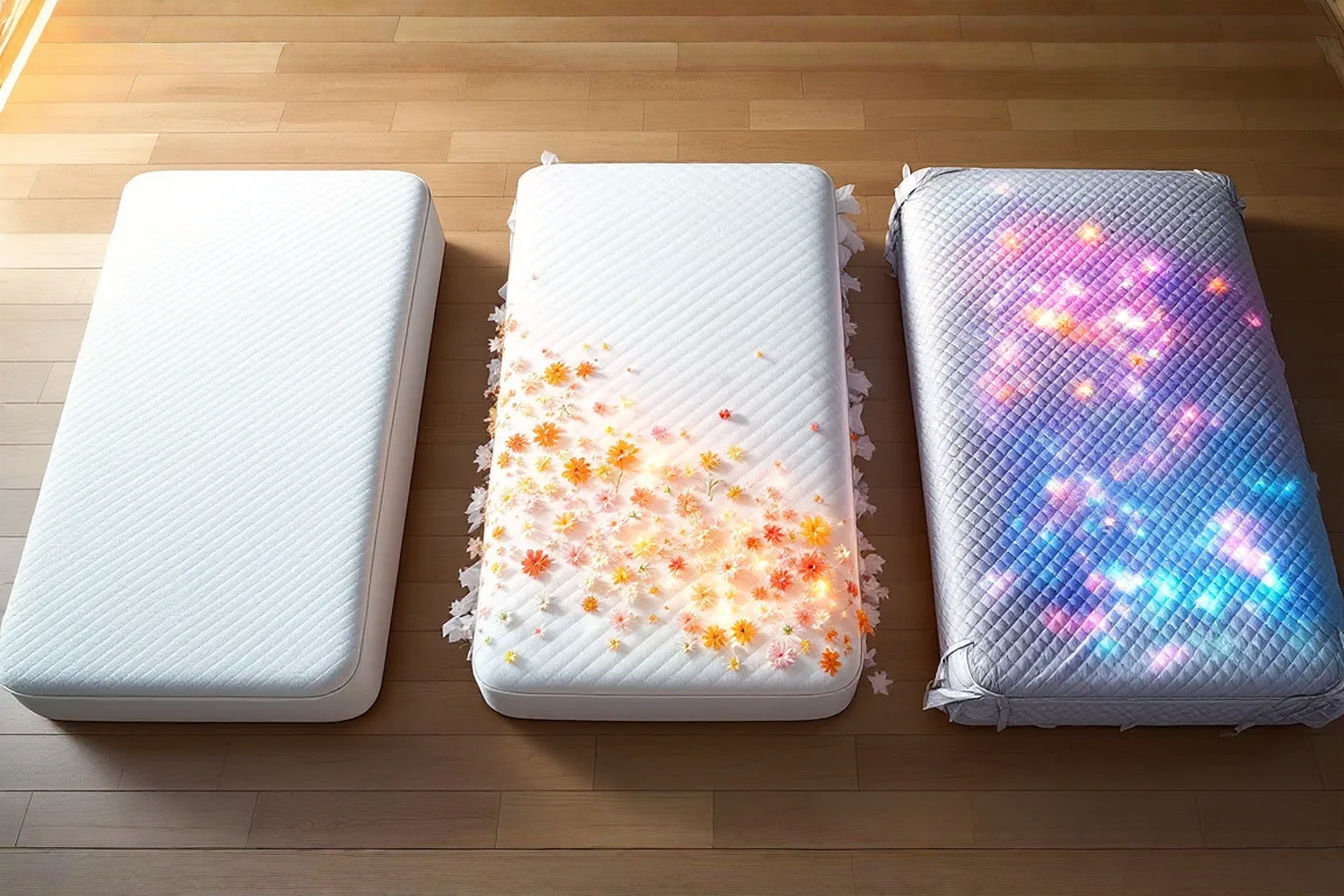
Moving your household belongings requires careful planning and proper protection, especially for valuable items like your mattress. Your bed represents a significant investment—with quality mattresses often costing between $800 and $2,500—and deserves thorough protection during transportation. Professional movers have developed a systematic approach to mattress protection that goes beyond the flimsy plastic covers most homeowners use.
This comprehensive guide reveals the professional 3-layer mattress protection system that moving experts actually implement to ensure your sleep surface arrives at your new home in pristine condition. Rather than relying on a single plastic cover, this multi-layered approach addresses all potential threats your mattress might face during relocation: dust, moisture, tears, and compression damage.
Why Standard Mattress Covers Fail
The typical consumer approach to mattress protection involves purchasing a basic plastic mattress bag from a moving supply store. These thin covers provide minimal protection and frequently disappoint for several critical reasons.
The material quality of standard covers creates numerous problems. These lightweight plastic barriers tear easily when coming into contact with door frames, staircase railings, or other furniture pieces. They also frequently split at the seams under the weight and movement of a mattress during transportation. One study by a major moving company found that 43% of plastic mattress covers develop tears before reaching their destination.
Moisture protection represents another significant failure point. Standard covers lack adequate water resistance, allowing condensation to penetrate during temperature changes between homes or while in transit. This moisture creates ideal conditions for mold and mildew growth, which can render a mattress unusable and potentially trigger health issues.
Dust and allergen penetration through tiny perforations or incomplete sealing means your mattress might arrive covered in particles from the moving truck or storage facility. For individuals with respiratory sensitivities or allergies, this contamination can turn a new bedroom into an uncomfortable space.
The financial implications of inadequate protection prove substantial. Mattress replacement after moving damage represents one of the most common post-relocation expenses, with homeowners spending an average of $1,100 on replacement mattresses following moves with improper protection. This unnecessary cost easily exceeds the modest investment required for proper protection.
The Professional 3-Layer Protection System Explained
Professional moving companies employ a strategic, multi-layered approach to mattress protection that addresses each potential threat individually. This system has evolved through decades of experience and creates redundancy that ensures complete protection.
The complete system consists of three distinct protective layers, each serving a specific purpose while complementing the others:
Layer 1: Dust and Allergen Barrier
The first layer provides a complete seal against microscopic particles. This initial barrier typically consists of a lightweight, non-woven fabric cover or specialized mattress encasement. Professional movers value this foundation layer because it:
- Creates a complete seal against dust, pollen, and other allergens
- Prevents bedbugs or other pests from accessing the mattress
- Provides a clean surface for subsequent layers
- Maintains breathability to prevent moisture accumulation
This inner layer remains relatively tight against the mattress surface, creating a smooth foundation for additional protection. The material choice for this layer prioritizes particle blocking over durability since other layers will provide physical protection.
Layer 2: Moisture Protection
The second layer focuses exclusively on water resistance and typically consists of a heavy-duty plastic or vinyl covering with secure sealing mechanisms. This waterproof barrier protects against:
- Rain or snow during loading and unloading
- Humidity changes between different climates
- Condensation inside moving vehicles
- Accidental spills during the moving process
Professional movers ensure this layer extends beyond the mattress dimensions with excess material properly folded and sealed. The moisture barrier’s effectiveness depends on complete coverage and proper seam sealing, which prevents water infiltration at vulnerable points.
Layer 3: Puncture and Tear Resistance
The outer layer provides physical protection against punctures, tears, and compression damage. Moving professionals typically use furniture pads, moving blankets, or specialized mattress covers constructed from dense, quilted materials. This final protective layer:
- Absorbs impact from accidental collisions
- Prevents tearing when navigating tight spaces
- Distributes pressure to avoid compression damage
- Creates a slip-resistant surface for safer handling
This exterior barrier often includes secure fastening methods like industrial velcro, heavy-duty straps, or specialized mattress covers with integrated closure systems. The durability of this layer determines how well your mattress survives the physical challenges of transportation.
The integrated system works through complementary protection. Each layer addresses specific vulnerabilities while supporting the others. The innermost layer blocks particles but would tear easily without additional protection. The waterproof middle layer prevents moisture damage but requires the outer layer to prevent punctures. Together, they create comprehensive protection that single-layer solutions cannot match.
Materials and Tools You’ll Need
Implementing professional-grade mattress protection requires specific materials. Here’s what moving experts recommend for each layer of the protection system:
For the dust and allergen barrier (Layer 1), you’ll need a fitted mattress encasement or specialized allergen cover. These products typically use non-woven polypropylene or microfiber fabrics with complete zippered enclosure. Quality options include hypoallergenic mattress encasements that fully envelop all six sides of your mattress with secure zipper closures. Expect to spend between $25-$45 for a quality queen-size allergen barrier.
The moisture protection layer (Layer 2) requires heavy-duty plastic mattress bags or covers. Professional movers recommend 4-6 mil thick polyethylene covers rather than the standard 2 mil versions sold in basic moving kits. Look for products specifically labeled as waterproof with secure closure mechanisms like adhesive strips or integrated zip systems. These specialized covers typically cost $15-$30 depending on mattress size.
For puncture and tear resistance (Layer 3), moving blankets or specialized quilted mattress covers provide optimal protection. Professional-grade moving blankets with dense padding and durable exterior fabric offer excellent protection. Alternatively, dedicated quilted mattress covers combine the outer two layers with integrated straps or handles for easier transport. This exterior protection represents the most significant investment, ranging from $30-$75 depending on quality.
Additional tools for proper implementation include packing tape, stretch wrap, mattress straps, and possibly rope or bungee cords for securing during transport. The complete protection system for a queen mattress typically costs between $70-$150, significantly less than mattress replacement.
For budget-conscious movers, some DIY alternatives exist. Clean painter’s drop cloths can substitute for allergen barriers, while heavy contractor bags with careful sealing can provide moisture protection. Quilted comforters or multiple layers of blankets may serve as outer protection, though with reduced effectiveness compared to specialized products.
Most materials can be purchased at home improvement stores, moving supply companies, or online retailers specializing in moving equipment. Professional moving companies often sell complete protection kits with all necessary components sized appropriately for your specific mattress.
Step-by-Step Guide to Applying the 3-Layer System
Properly implementing the protection system requires methodical application of each layer. Follow this step-by-step process used by professional movers:
Before beginning the protection process, prepare your workspace and materials. Strip all bedding and vacuum the mattress thoroughly to remove existing dust and allergens. Ensure the mattress surface is completely dry and free from debris. Gather all protection materials and arrange them in application order. The protection process should occur in a clean, open space with enough room to maneuver around the entire mattress.
Applying Layer 1: The Dust and Allergen Barrier
Start by positioning your mattress on its side against a wall or with help from an assistant. Unfold the allergen barrier and identify the opening mechanism (typically a zipper). Slide the encasement over one end of the mattress, then work it down over the entire surface, similar to putting on a fitted sheet but completely enclosing the mattress.
Ensure the barrier fits snugly without excessive wrinkles that could cause discomfort later. Check that corners seat properly with your mattress and that seams align with mattress edges. Secure all closure mechanisms, typically by fully closing the zipper and applying any zipper locks or covers that came with the product. Verify complete enclosure by checking all seams and closure points.
Applying Layer 2: The Moisture Protection Layer
With the allergen barrier in place, position the mattress flat on the floor or elevated on a clean surface. Unfold the heavy-duty plastic cover and create an opening large enough to insert the mattress. For two-piece systems (top and bottom covers), place the bottom piece on your work surface first.
Slide the mattress into the plastic cover, ensuring it reaches all corners completely. For bag-style covers, work from one end to the other, gradually pulling the cover over the entire mattress. Remove excess air from inside the plastic by pressing down gently on the mattress while sealing.
Secure all openings using the manufacturer’s closure system. For adhesive strips, remove backing and press firmly along the entire seal. For heat-sealed edges, follow the product instructions carefully. If using tape to seal edges, apply evenly with overlapping pieces to prevent moisture ingress. Verify the waterproof seal by checking for any openings or tears in the plastic.
Applying Layer 3: The Damage Protection Layer
Position the now-wrapped mattress on its side or flat, depending on your specific protection products. For moving blankets, wrap the mattress completely, folding excess material at corners and creating overlapping layers where needed. For quilted mattress covers, slide the mattress into the cover similar to the previous layers.
Secure this outer layer with appropriate methods. For moving blankets, use stretch wrap around the entire package, applying several revolutions at different points along the mattress. For specialized covers with integrated straps, fasten according to design. Add mattress straps around the entire package, positioning at least three straps for queen or larger mattresses – one near each end and one in the middle.
The fully protected mattress should now be completely encased with no internal layers visible. The outer surface should feel padded and secure with no shifting between layers. All straps should be tight enough to prevent slipping but not so tight that they compress the mattress significantly.
Special Considerations for Different Mattress Types
Different mattress constructions require specific protection adaptations. Professional movers adjust their techniques based on mattress type:
Memory foam mattresses demand careful handling due to their temperature sensitivity and density. These mattresses should never be folded, as this can permanently damage the foam structure. The protection system should minimize compression while maintaining a flat position during transport. For memory foam, professionals often add an additional rigid layer (such as a sheet of plywood) to prevent bending during transit. The outer protection layer should distribute pressure evenly to prevent indentations.
Innerspring mattresses benefit from firm outer protection that prevents coil damage. The greatest risk involves compression that bends or damages internal springs. Professional movers often use thicker moving blankets for these mattresses and ensure straps don’t create pressure points that might damage coils. These mattresses should be transported on their sides rather than flat to reduce spring compression.
Hybrid mattresses combine elements of foam and innerspring designs, requiring balanced protection. The outer layer should provide rigid support while accommodating the mattress’s weight, which often exceeds pure foam models. Professional movers typically add corner protectors to hybrid mattresses before applying the final protection layer.
Pillow-top mattresses present unique challenges due to their uneven surface. The protection system must accommodate the additional loft without compression. Professionals often use larger covers for each layer and adjust strapping to avoid compressing the pillow surface. These mattresses benefit from custom-sized covers rather than standard options.
Adjustable bases with integrated mattresses require disassembly when possible, protecting the mattress and mechanical components separately. If disassembly isn’t possible, professionals secure all movable parts before protection and often use custom wooden bracing to prevent mechanism damage during transit.
Moving Day Best Practices
Even with perfect protection, proper handling determines whether your mattress arrives undamaged. Professional movers follow these critical practices:
Proper lifting techniques prevent both personal injury and mattress damage. Always lift with your legs rather than your back, keeping the mattress close to your body while moving. For queen and larger sizes, professional movers always use at least two people. They grip underneath the mattress rather than using the protective covering as handles, which could tear or shift the protection layers.
The loading process significantly impacts mattress condition upon arrival. Professional movers position mattresses either flat on top of even items or vertically along the side of the truck. They never place mattresses directly on the truck floor or against rough or dirty surfaces. The ideal position places the mattress between flat furniture pieces like table tops or box springs, creating even pressure distribution.
Securing the mattress within the vehicle prevents shifting and damage during transit. Professionals use logistical loading techniques, ensuring the mattress can’t slide during transportation. They secure mattresses using the vehicle’s integrated tie-down system or additional straps anchored to the truck’s structure. The mattress should remain completely immobile during the entire journey.
Climate considerations affect how professionals handle mattress protection. In humid conditions, they might add desiccant packets between protection layers to absorb excess moisture. In extremely cold conditions, they take extra care when unloading, as plastic covers become brittle and prone to cracking. For long-distance moves, professional movers periodically check mattress positioning to prevent prolonged compression.
Unpacking and Storage
The unpacking process requires as much care as the protection application. Follow these professional guidelines for safely removing protection materials:
Begin by bringing the mattress to its destination room before unwrapping. This prevents contamination during household unpacking and reduces the risk of damage while navigating partially unpacked spaces. Position the mattress on its base (box spring or platform) before removing protection layers.
Remove the protection layers in reverse order of application. Start by unfastening all straps and removing the outer damage protection layer. Carefully cut or unseal the waterproof layer, avoiding contact between cutting tools and the mattress surface. Finally, remove the innermost allergen barrier, which can often be retained as ongoing mattress protection.
Professional movers recommend allowing the mattress to “breathe” for several hours before making the bed. This dissipates any moisture or odors that may have accumulated during transit. Vacuum the exposed mattress thoroughly before adding bedding to remove any particles that may have penetrated the protection.
For protection materials, evaluate reusability based on condition. The outer protection layer and straps typically remain suitable for future use unless damaged. Clean and dry these items thoroughly before storage. The waterproof layer usually sustains the most damage during removal and often requires replacement for future moves. The innermost allergen barrier often remains in perfect condition and can serve as ongoing mattress protection in your new home.
Store reusable components in clean, dry conditions away from sharp objects or extreme temperatures. Proper storage extends their usability for future moves or for protecting other household items. Many professional movers recommend storing these materials with other moving supplies in clearly labeled containers.
Conclusion
The professional 3-layer mattress protection system represents the culmination of moving industry experience and demonstrates why mattress protection deserves serious attention during relocation. This comprehensive approach addresses all potential threats to your mattress: contamination, moisture, and physical damage.
The investment in proper protection yields significant returns. The complete system typically costs between $70-$150 depending on mattress size and material quality, representing approximately 5-10% of a new mattress price. This modest expenditure prevents the substantial cost of premature replacement and preserves your sleep quality in your new home.
Beyond financial considerations, proper mattress protection offers peace of mind during an already stressful time. Knowing your sleep surface remains protected from environmental contaminants and physical damage allows you to focus on other moving priorities with confidence.
For a successful relocation, remember that your mattress deserves the same careful protection as more visibly fragile items. By implementing this professional system, you ensure that one of your most-used household items arrives ready to provide comfortable, healthy sleep in your new home.

